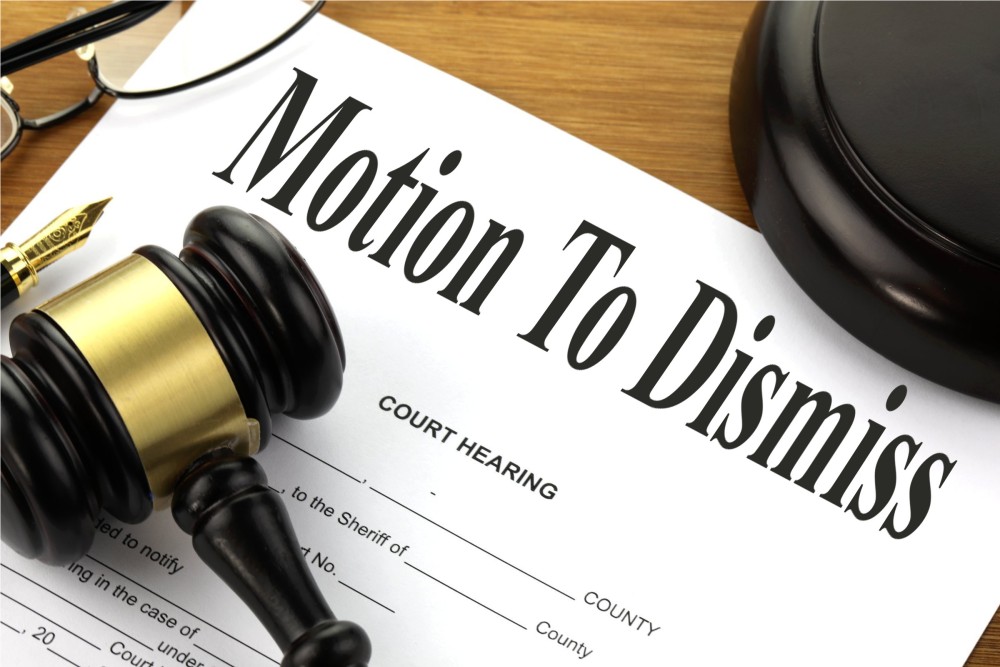Get Your Legal Documents Now!
Whether you are dealing with a complex family matter, facing criminal charges, or navigating the intricacies of business law, our mission is to provide you with comprehensive, compassionate, and expert legal guidance.

A motion to dismiss is one of the most effective tools in civil litigation, allowing defendants to challenge a lawsuit before it moves to discovery and trial. However, a poorly drafted motion can be quickly denied, leading to unnecessary litigation costs. To increase the chances of success, a motion to dismiss must be clear, well-structured, and legally sound. This guide explores the key elements and strategies for drafting a strong motion to dismiss.
How to Draft a Strong Motion to Dismiss: Key Elements and Strategies
Introduction
A motion to dismiss is one of the most effective tools in civil litigation, allowing defendants to challenge a lawsuit before it moves to discovery and trial. However, a poorly drafted motion can be quickly denied, leading to unnecessary litigation costs. To increase the chances of success, a motion to dismiss must be clear, well-structured, and legally sound. This guide explores the key elements and strategies for drafting a strong motion to dismiss.
Key Elements of a Strong Motion to Dismiss
1. Proper Formatting and Court Compliance
Every motion must comply with the specific formatting rules of the court in which it is filed. Failure to adhere to court rules can result in immediate rejection. ✅ Check court rules for formatting, page limits, and citation requirements. ✅ Use proper headings to clearly separate legal arguments. ✅ Include relevant case citations that support your arguments.
2. Clearly Stated Grounds for Dismissal
A motion to dismiss should explicitly state the legal basis for dismissal. Common grounds include:
3. Strong Introduction and Case Background
The introduction should briefly summarize why the motion should be granted. It should: ✅ State the defendant’s position clearly. ✅ Provide a concise summary of the key legal arguments. ✅ Cite relevant procedural rules to establish legal authority.
4. Legal Argument Section with Case Law Support
A motion to dismiss must include a persuasive legal argument supported by statutes, case law, and legal precedent. ✅ Use persuasive legal language (e.g., "The plaintiff’s claims fail as a matter of law because..."). ✅ Cite relevant case precedents to support your argument. ✅ Address counterarguments preemptively by explaining why the plaintiff’s claims lack merit.
5. Request for Relief
The conclusion should clearly state what the defendant is requesting. ✅ Request complete dismissal ("For the foregoing reasons, Defendant respectfully requests that the Court dismiss the Plaintiff’s Complaint in its entirety.") ✅ Specify whether dismissal should be with or without prejudice. ✅ Include a proposed order for the judge to sign.
Best Strategies for Drafting a Persuasive Motion to Dismiss
1. Focus on Legal, Not Factual, Deficiencies
A motion to dismiss is not about disputing facts—it challenges the legal sufficiency of the complaint. Avoid introducing unnecessary factual arguments that should be reserved for trial or summary judgment.
2. Keep It Concise and Organized
Judges review multiple motions daily. A well-organized motion increases the likelihood of success. ✅ Use headings and subheadings for clarity. ✅ Avoid unnecessary legal jargon that makes the motion difficult to read. ✅ Stay within page limits to ensure the judge reads the entire argument.
3. Anticipate and Address Counterarguments
A strong motion to dismiss should anticipate how the plaintiff may respond and preemptively counter their arguments. ✅ Identify weaknesses in the plaintiff’s claims and highlight them clearly. ✅ Use case law where similar claims were dismissed to strengthen your argument.
4. Use Strong and Direct Language
A persuasive motion should be confident and authoritative. ❌ Weak argument: "It is possible that the plaintiff has failed to state a claim." ✅ Strong argument: "The plaintiff has failed to state a claim upon which relief can be granted, as required under Rule 12(b)(6). The complaint must be dismissed."
5. Follow Proper Filing Procedures and Deadlines
Timeliness is crucial. Courts have strict deadlines for filing motions to dismiss, usually before the defendant files an answer to the complaint. ✅ Check local rules for deadlines. ✅ Serve the motion properly on the plaintiff. ✅ File the motion electronically or in person, as required by the court.
Common Mistakes to Avoid
❌ Focusing too much on factual disputes instead of legal deficiencies. ❌ Failing to cite legal authority (case law, statutes, or rules). ❌ Making conclusory statements without explanation. ❌ Ignoring procedural rules (such as page limits, format, or deadlines). ❌ Failing to request specific relief (dismissal with or without prejudice).
How Legal Husk Can Help
At Legal Husk, we specialize in drafting precise, well-structured, and persuasive motions to dismiss. Our expertise ensures: ✅ Proper legal citations and case law support. ✅ Strategic arguments tailored to specific case facts. ✅ Compliance with all procedural and formatting requirements.
Final Thoughts
A well-drafted motion to dismiss can be a game-changer in litigation, potentially ending a case before it moves to expensive discovery and trial. By following these key elements and strategies, you can maximize your chances of having a case dismissed early.
📩 Need a professionally drafted motion to dismiss? Contact Legal Husk today!
Whether you are dealing with a complex family matter, facing criminal charges, or navigating the intricacies of business law, our mission is to provide you with comprehensive, compassionate, and expert legal guidance.
Comments